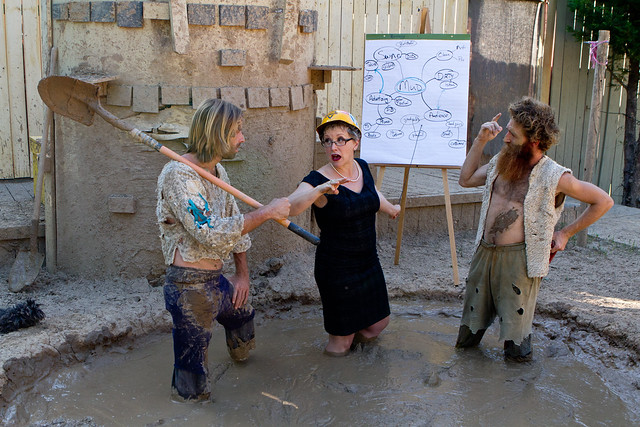In a clearly defined business category, it is easy to watch your competitors and see which of their ideas work, and which fail. You can watch the most successful team, and mimic their attempts within your own budgets of time and money. However, those of us that straddle more than one category have to keep our attention on multiple category leaders. We succeed by marrying diverse elements in order to create a unique category. We can look to the leaders in each of those categories to appropriate tools or processes that we have seen as successful.

We see this mimicry a lot in the festival industry. Because geography keeps many festivals from ever competing for an audience, tips are regularly shared amongst management. This is not a suggestion that there is not still competition. Shows compete for vendors, performers, and ranking on a wide list of criteria. Every show has its priority as to which criteria are most important.
In my favorite model of festival management, within the offices the separate divisions of management are allowed to work as if their department is the most important. This creates a space of good-natured competition that raises the show in each of the different criteria. Respect is key. In no way can anyone think that they must denigrate another category in order to shine. (Unhealthy competition like that is a team-building issue, left for another post.)
So Vendor Coordinators watch to see any innovations made by individuals who have that title at other shows. PR Managers follow all the other shows’ media … watching for an element that will work well with their audience.
But what is the situation when you are the category leader … even in multiple criteria?
Just like a vendor can straddle categories and innovate a new category, entire shows have to look to other industries to create innovation. Innovation always happens at the edges of a proven method. Staying at the top of the category takes a lot more work than mimicking ideas that have worked for others.
Scene:
End of season at the largest Renaissance Festival in the US … 20 of us are in a room, going over the past year’s successes and failures. We represent a variety of vendors and management, but we are in agreement that we are tasked with keeping this show on the cutting edge of the industry. When the meeting breaks, we stand around rattling off to each other the list of events we will be attending for research purposes. No one lists a Renaissance Festival. Some of us vend at other festivals, and are trusted to bring back any ideas that work.
The list we share and the events we invite each other to reads like an ADHD travel wish list: New Media Expo, Interactive Week of South by Southwest, The National Restaurant Association Show, The Fancy Food Show, Walt Disney World, Burning Man, Schlitterbahn, and Bonnaroo. Personally I’m watching how the BBC is using an app to keep fans of the woefully short-seasoned show Sherlock engaged with the characters between seasons. This has some specific parallels to our marketing situations.
Of course all of this is in addition to the research we all do to stay at the top of our own smaller games (read: individual businesses or jobs), which we are playing on the giant gameboard that is the festival as a whole.
Where do you look for business inspiration? If you are a category creator, what are the categories that you combined in order to create it? Does clarifying those categories help you see a new place to look for ideas? Let us know in the comments, we want to hear from you.
I just attended a great seminar at the Pennsylvania Fairs Convention presented by Danny Aguilar of the Delaware State Fair relevant to this topic. It was called “Increase Visibility, sponsorship revenue, and social media presence.” It was geared towards folks running state and county fairs, but many of the ideas were applicable to my goals with my own business, Circus Stella.
I found Mr. Aguilar to be extremely generous with ideas that have worked well for his event that could be used well at other events. He shared 30 ideas, several of which were his own innovations. It was inspiring to listen to such an innovator, and also to see that, despite being on the cutting edge of his field, he remained humble and willing to listen to the input of others.
Thank you for this article, I enjoyed it.
Good to see you up and running! Personally, I feel as though “mimicry” of other events should be approached with caution, as it seems as though the original draw of interactive theater and craft has fallen prey to such mimicry.
If there were an area where I would like to see some mimicry it would be in the area of patron comfort. Clean, contemporary rest rooms, dry climate controlled areas in inclimate weather better parking and transport for those in outer lots, just to name a few.